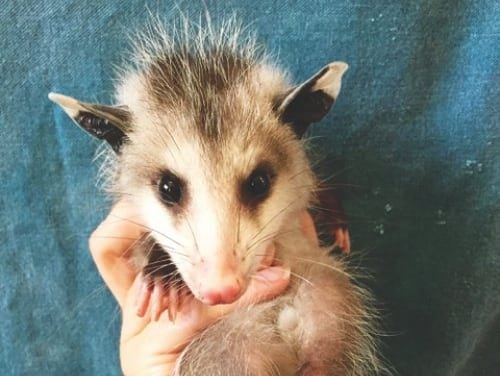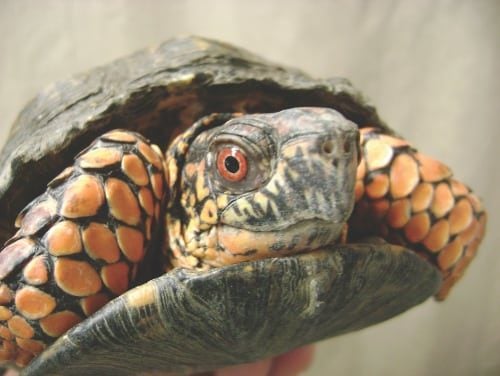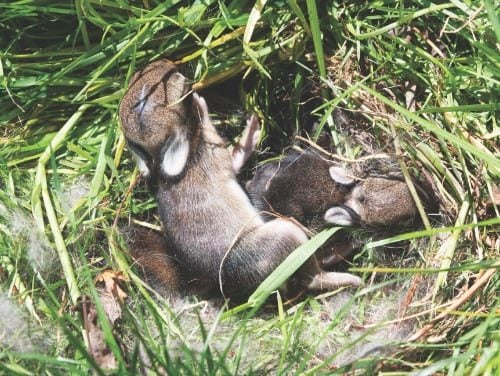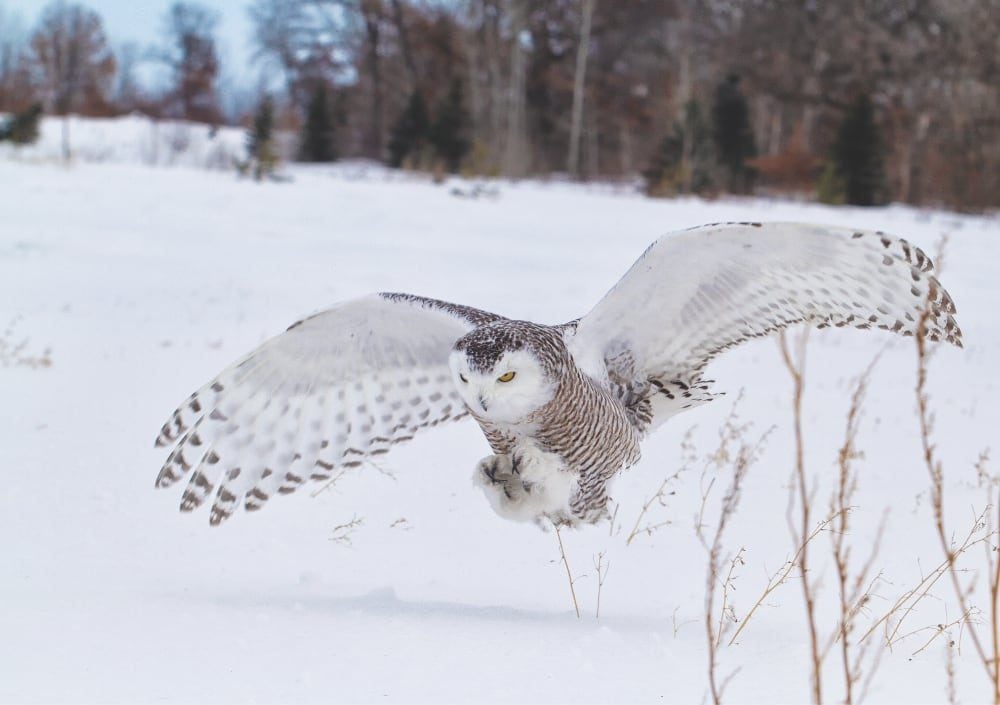By Todd McLeish
Arianna Mouradjian ’07 has done just about every job at the Wildlife Clinic of Rhode Island. She calls it a “labor of love.” At the clinic, where caring for orphaned and injured wild animals is a rewarding effort, URI students fill an urgent need for volunteers.
When Blaine Hymel ’17 was living in Tiverton, Rhode Island, she found an injured bird on her porch and didn’t know how to help it. After searching the web, she discovered the Wildlife Clinic of Rhode Island, which cares for sick, injured, and abandoned wild animals until they can be released back into the wild. After dropping off the bird, Hymel investigated the organization further and decided to volunteer.
“I’ve always known that I wanted to become a veterinarian,” she says. “Growing up, I lived next to a cow farm and always had animals at home, and I always tried to take care of any animals I found.”
Her first months volunteering at the clinic, located in Saunderstown, Rhode Island, just a few miles from URI’s Kingston Campus, found her preparing food for the animals and cleaning their cages.
“At first I was terrified of touching the animals because I was afraid to do the wrong thing or do something that would hurt them,” Hymel says. “It took time to get used to it, but it was a good environment to learn in.”



She quickly realized that she wanted to become a licensed wildlife rehabilitator, but the initial licensing class is only held once a year and she had just missed it. Eager to get started, she flew to Texas to take a similar class. For the next three years—until she enrolled in vet school last year—she volunteered at the clinic every week, and she even set up a rehabilitation space at her home.
“I was sort of an in-between babysitter,” Hymel explains. “I would accept animals and care for them at home until I could get them to the clinic or to other rehabilitators. And sometimes I would care for adult animals that needed a higher level of care.”
The Wildlife Clinic—along with its network of about 35 in-home rehabilitators—fields about 50,000 phone calls each year from Rhode Islanders who come across wildlife in need of assistance. Most of those calls are for trauma caused directly or indirectly by humans: animals struck by cars, attacked by pets, or entangled in fishing line; and birds that collide with windows. Extreme weather events add to the injuries, like when hurricanes take down trees where squirrels and birds are nesting. After receiving critical care, most animals are transferred to private homes where licensed rehabilitators nurse them back to health and then release them.
For nearly 10 years, many of the calls to the clinic were answered by Arianna Mouradjian ’07, a Providence native who earned a bachelor’s degree in wildlife conservation and biology from URI before going to law school. Mouradjian served the clinic first as a volunteer, then as a staff member, and later as the director of the nonprofit clinic. She now serves on its board of directors.
“There’s also the emotional toll of dealing with the public—people who are stressed out over an animal they’ve found and want to make sure it gets taken care of,” Mouradjian adds. “We’re a small all-volunteer group, and someone isn’t always available to rush across the state to assess the situation. Managing the expectations of the public versus the resources we have is a big challenge.”
During baby season—April to September—more than 50 animals may be delivered to the clinic’s doorstep each day. URI students fill an urgent need for volunteers.
The clinic and the rehabilitators care for between 4,000 and 5,000 animals each year—from bats and bunnies to owls and otters. About 50 to 60 percent are eventually released back into the wild, a higher rate than the national average.
Baby season—April to September—is the busiest time of year, when more than 50 animals may be delivered to the clinic’s doorstep each day, mostly baby birds, squirrels, and rabbits. That’s when volunteers are especially necessary. URI students often meet that need, some as interns arranged through URI’s Department of Natural Resources Science, and others who are simply committed animal lovers who want to help.
Josh Brancazio ’21 heard about the Wildlife Clinic his first day on campus, and within a month he began volunteering. Every Saturday during the school year, he spends four hours feeding animals, dispensing medication, constructing outdoor caging, and doing whatever else is needed.
“One of the more difficult parts for me is restraining some of the animals that have a lot of character,” says Brancazio, a double major in animal science and technology and wildlife and conservation biology. “Last year, there were some crows that were very flappy and noisy and hard to catch, and that was pretty intimidating for me. The animals were in charge, and I was trying to figure out how to take control.”
His favorite animals to work with are baby opossums, which he says are “wonderfully adorable and so funny. They try to be intimidating when you grab them to move them to another cage. They open their mouths wide, showing their tiny baby teeth. It’s really funny.”
Samantha Ward ’19 says the baby opossums are also her favorite animals to care for at the clinic. A marine biology and Spanish double major, she says she “was always that animal girl, always interested in trying to work to mitigate some of the effects that humans have on wildlife.”
Like Brancazio, Ward discovered the clinic and started volunteering before the end of her first semester at URI. After three years, she is now comfortable assessing animals as they arrive and developing treatment plans for them.

“I like that every day is different,” she says. “I still encounter animals that I haven’t cared for before, and every situation is different. Every time an animal comes in, it’s a challenge to figure out what’s going on with it. I’ve always appreciated animals, but seeing them up close and getting a feel for their personalities is really rewarding. “And,” she adds, “holding a snowy owl is a feeling like no other.”

It’s inspiring to learn about all the wonderful work you do!